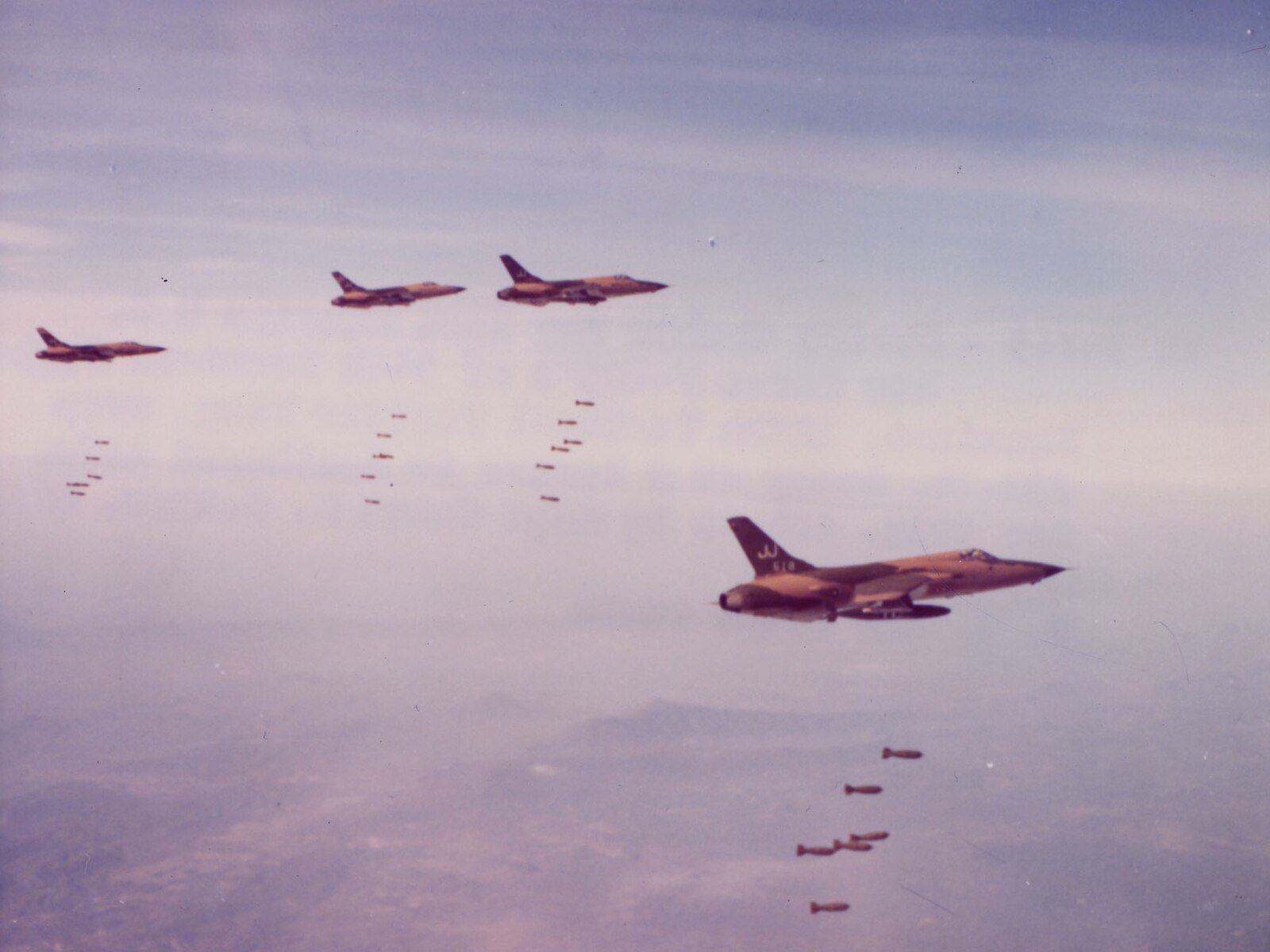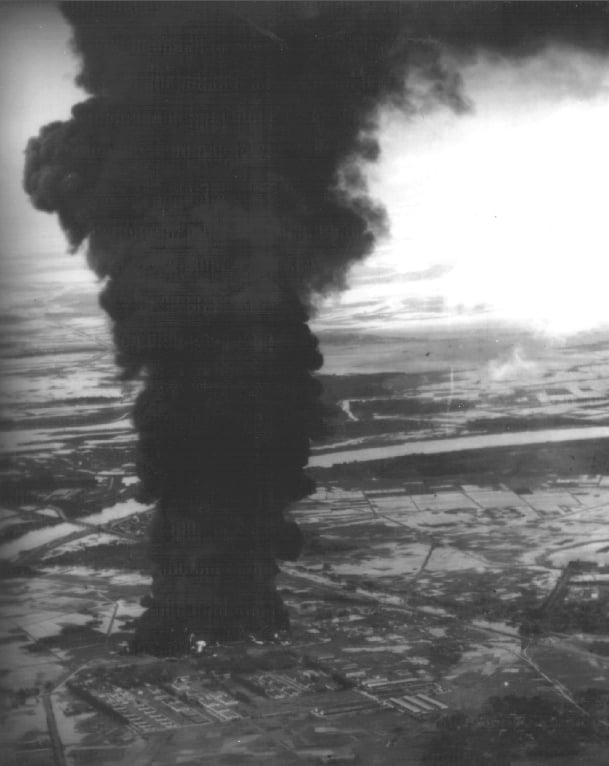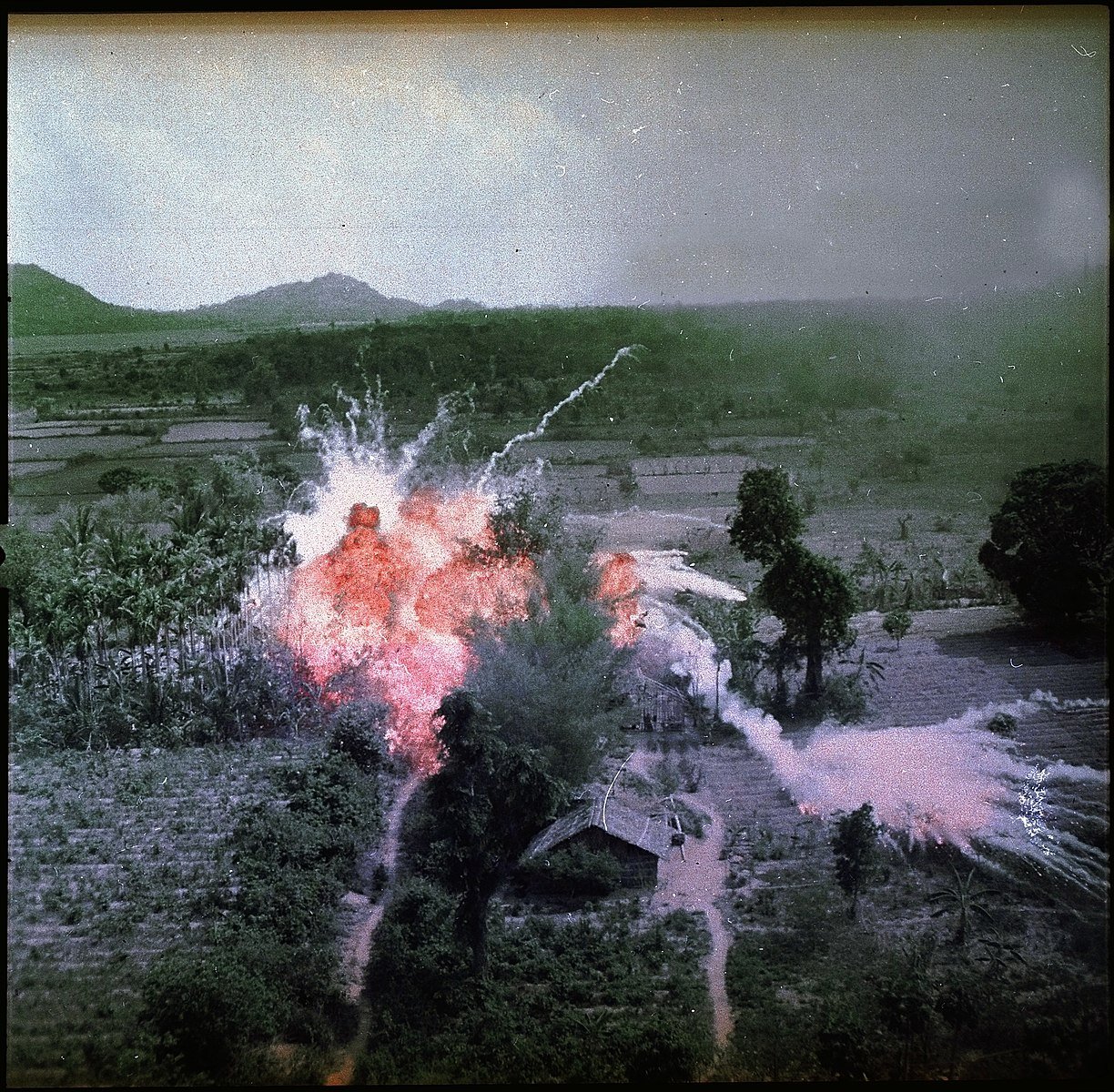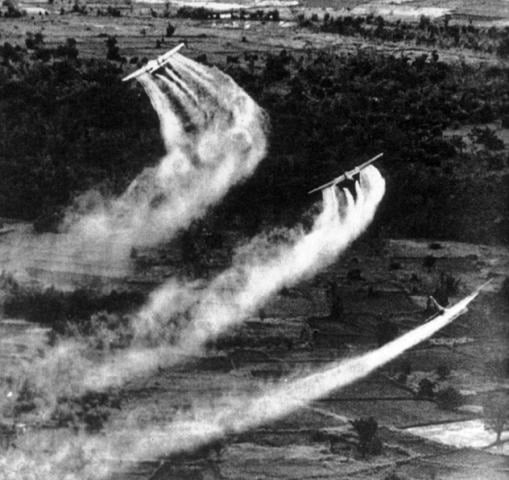US Warfare Tactics in the Vietnam War (Edexcel GCSE History): Revision Note
Exam code: 1HI0
Summary
The United States was far more technologically advanced than Vietnam and the wealthiest nation in the world. It used its enormous wealth and advanced technology to try to bring about victory. This involved a relentless aerial bombing campaign, the use of helicopters to search for and destroy Vietcong (VC) fighters and the use of toxic chemicals to burn and poison the jungles of South Vietnam
What was Operation Rolling Thunder in 1965?
Operation Rolling Thunder was the name of an enormous American strategic bombing campaign that ran from March 1965 to November 1968
It had two main intentions:
To stop factories in North Vietnam from making weapons and supplies
To prevent weapons and supplies travelling down the Ho Chi Minh Trailto the Vietcong

The impacts of Operation Rolling Thunder
Impacts on the Americans | Impacts on the Vietnamese |
|---|---|
|
|

What was ‘search & destroy’?
Unlike the French and the Japanese who had fought in Vietnam, the Americans had large numbers of helicopters
US generals believed that helicopters would give them a huge advantage as they would be able to move troops around the jungle quickly in pursuit of the VC
US soldiers would quickly descend on villages and search for any evidence of VC activity or supplies
If they found any, they would destroy the village and move the villagers to a strategic hamlet
The impacts of ‘search & destroy’
The US soldiers were still vulnerable to booby traps and ambushes as soon as they left their helicopters
It made over three million South Vietnamese homeless
It turned many South Vietnamese people against the Americans
The VC went into hiding when they heard the helicopters arriving and reemerged to take control of the area once the Americans left
Television footage of American soldiers burning the villages of poor Vietnamese farmers damaged the USA’s reputation
What was Operation Cedar Falls in 1967?
Operation Cedar Falls was an enormous search and destroy mission that was launched in January 1967
A large area near the South Vietnamese capital of Saigon had been identified as containing large numbers of VC fighters, tunnels and supply depots
Thousands of Innocent villagers were forcibly removed from their homes to create ‘free fire’ areas
Around 30,000 US and Army of the Republic of Vietnam (ARVN) soldiers then swept the area, destroying tunnels, capturing supplies and searching for VC
The impacts of Operation Cedar Falls
The majority of VC soldiers were able to escape the area before the operation was launched
Although around 700 guerilla fighters were killed and many tonnes of supplies captured, it did not greatly impact the VC’s ability to fight and control the area
Chemical warfare: Napalm & Operation Ranch Hand
Napalm is a highly flammable chemical liquid jelly
When dropped in bombs, the burning jelly sprays out over a large area
It sticks to anything it hits, including people, and is extremely difficult to extinguish
American forces used around 400,000 tonnes of napalm throughout the Vietnam War leading to many civilian deaths and injuries

Operation Ranch Hand ran from 1962 to 1971 and was designed to destroy the jungle and crops that hid and fed the VC
It involved spraying 19 millions of gallons of powerful herbicides such as Agent Orange and Agent Blue over huge areas of South Vietnam
The poisonous chemicals stayed in the soil for years after the war and led to cancer, birth defects and miscarriages among the people who lived there

Worked Example
Give two things you can infer from Source A about Search and Destroy missions in Vietnam.
Source A: From an interview with an American soldier who fought in Vietnam. Here he is commenting on Search and Destroy missions. “You knew the enemy was everywhere. You didn’t know if your next step would be your last because you might tread on a mine or a booby trap. A lot of the time you were searching for the Vietcong’s hiding places, like tunnels and caves. If you were able to find the enemy, then you killed them. This was all a lot harder than it sounds. When we moved through a village our soldiers would burn down houses, even though they weren’t supposed to.” |
Answer
What I can infer:American soldiers were often terrified whilst undertaking search and destroy missions
Details in the Source that tells me this: The soldier says that: “you didn’t know if your next step would be your last because you might step on a mine or a booby trap”.
What I can infer:
The lives of innocent villagers were often greatly disrupted and badly affected by search and destroy missions
Details in the Source that tells me this:
The soldier says that: “When we moved through a village our soldiers would often burn down houses…”
Examiner Tips and Tricks
When looking for differences in interpretation in this paper, make sure you identify the fundamental difference in their points of view rather than just surface details like the date they were written or the nationality of their authors

You've read 0 of your 5 free revision notes this week
Unlock more, it's free!
Did this page help you?